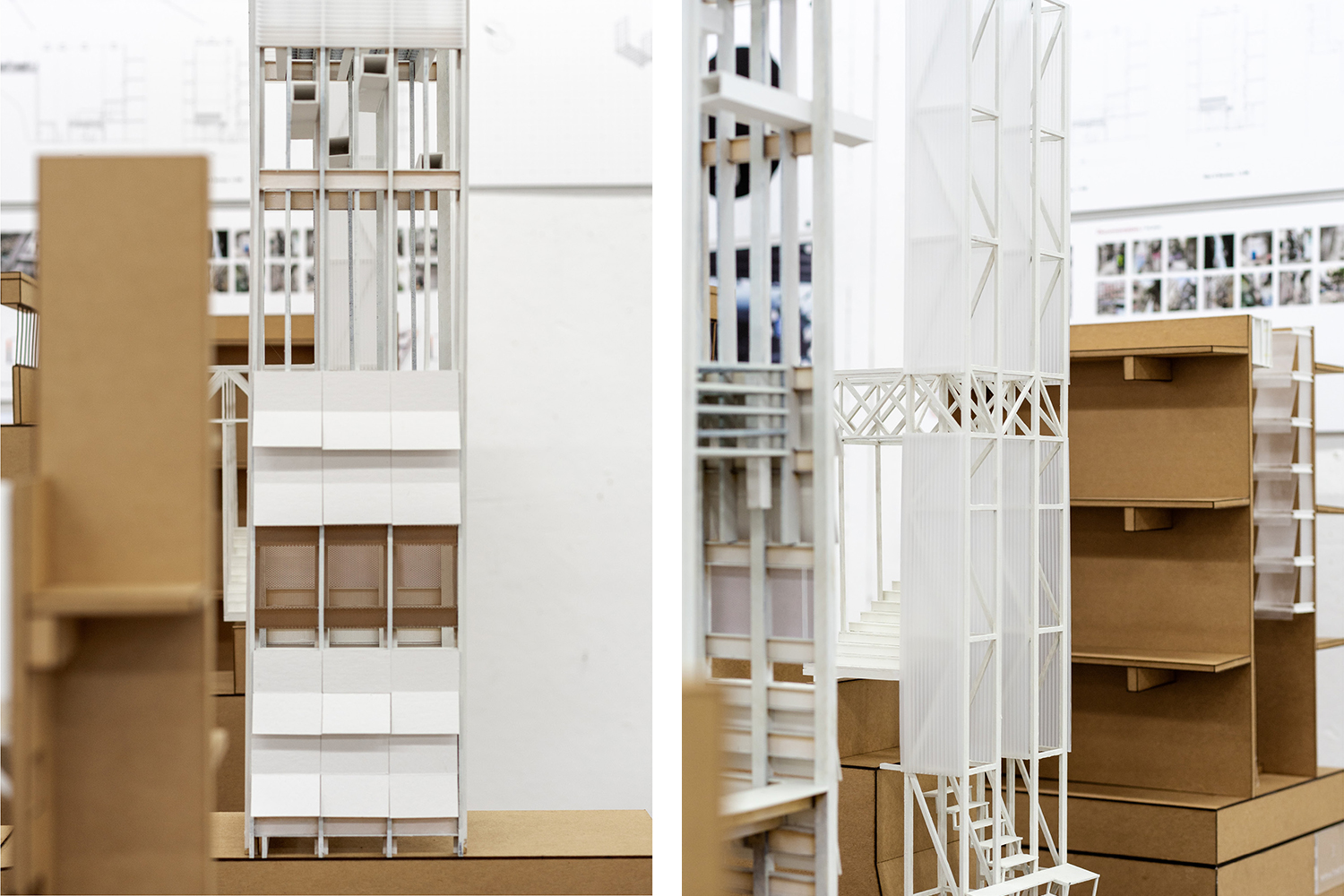Ji Xiang
University of Hong Kong
Hong Kong, China
With increasing demands for public space, redevelopment schemes in Hong Kong led by the government and real-estate developers aim to create an image of clean alleys to relieve the urgency. Although the city’s back alleys are usually cramped with building service equipment that has negative impacts on the environment, the functionality of these spaces is not addressed in the schemes. By looking into environmental principles, the proposal treats back alleys as a filter rather than the source of environmental harm, reversing the negative connotations through passive and active strategies and eventually providing a hygienic and pleasant environment for the public.
This project examines the nature of back alleys in Hong Kong and seeks the potential of providing more pleasant public space not only from an aesthetic aspect but also environmental performance. Utilising residual space in Hong Kong is common because of its high-density nature. Unlike eradicating the original state and introducing new programs in these places, this project preserves the functionality of the backside of buildings, while harnessing the exhaust energy to improve the back alley environment. The waste and exhaust could have a positive impact on the micro-climate within the district, to improve the natural ventilation, collect and filter water, and nurture greenness.
One specific site was chosen as the testing ground for interventions, to provide guidelines to other places in high-density urban contexts and the design and research process tackled subjects from small scales like pipes and ducts to large scales including building façade and patterns.



